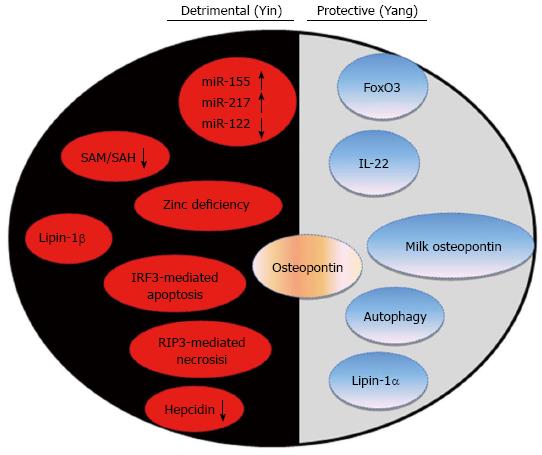Copyright
©2014 Baishideng Publishing Group Inc.
World J Gastroenterol. Sep 28, 2014; 20(36): 12908-12933
Published online Sep 28, 2014. doi: 10.3748/wjg.v20.i36.12908
Published online Sep 28, 2014. doi: 10.3748/wjg.v20.i36.12908
Figure 3 New progress in alcohol-induced detrimental (Yin) and adaptive protective (Yang) pathways in the liver.
Experimental and clinical research for alcoholic liver disease (ALD) in the past several years has revealed many detrimental factors leading to alcohol-induced liver pathogenesis. In addition to detrimental factors, emerging evidence indicates that alcohol consumption can also activate cellular adaptive/compensatory protective mechanisms to attenuate alcohol-induced detrimental effects. The eventual outcomes seem to be decided by the balance between the “bad” (detrimental) and “good” (adaptive protective) factors induced by alcohol in each individual person or cell. This is more like a battle between “Yin” (the dark side of detrimental) and “Yang” (the light side of protective). The emerging detrimental factors induced by alcohol are listed on the dark side and the adaptive protective factors are listed on the light side. The role of osteopontin is still controversial. Therefore approaches to inhibit the dark side (detrimental “Yin”) or boost the light side (protective “Yang”) may provide novel therapeutic tools for treating ALD.
- Citation: Williams JA, Manley S, Ding WX. New advances in molecular mechanisms and emerging therapeutic targets in alcoholic liver diseases. World J Gastroenterol 2014; 20(36): 12908-12933
- URL: https://www.wjgnet.com/1007-9327/full/v20/i36/12908.htm
- DOI: https://dx.doi.org/10.3748/wjg.v20.i36.12908









